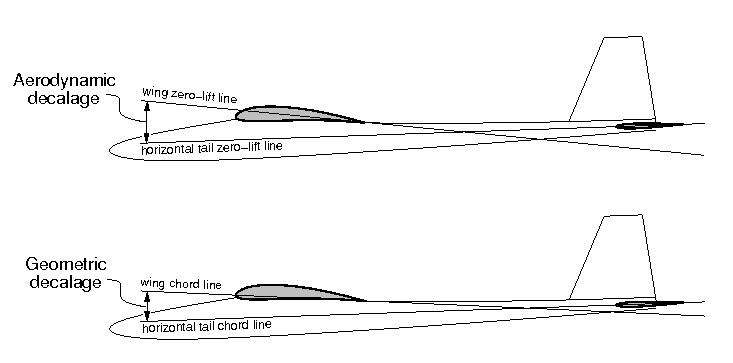Decalage
Decalage on a fixed-wing aircraft is the angle difference between the upper and lower wings of a biplane, i.e. the acute angle contained between the chords of the wings in question.
The decalage is said to be positive when the upper wing has a higher angle of incidence than the lower wing, and negative when higher wing's angle of incidence is lower than the angle of incidence of the lower wing. Positive decalage results in greater lift from the upper wing than the lower wing, the difference increasing with the amount of decalage.[1]
In real life the biplane top wing is usually rigged with less angle of incidence - i.e. negative decalage, causing the airstream separation and ensuing loss of lift (stall) occur first on the lower wing, providing the biplane with extra margin of stability in stall.
Decalage angle can also refer to the difference in angle of the chord line of the wing and the chord line of the horizontal stabilizer. This is different from the angle of incidence, which refers to the angle of the wing chord to the longitudinal axis of the fuselage, without reference to the horizontal stabilizer.

References
- ↑ NACA technical report No.269 The Distribution of Loads Between the Wings of a Biplane Having Decalage (November 1927), p.18. Retrieved on 9 February 2009.